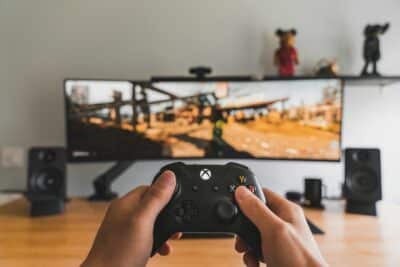
Nancy Peske didn’t plan on becoming an expert on sensory processing disorders. Like so many of us, she learned on the job — because her son had challenges that required her attention. Her now-teenage son was just two years old when he was diagnosed with sensory processing disorder and multiple developmental delays. Nancy knew she’d need to adapt and adjust her parenting, but had a hard time finding resources. So Nancy, a writer by trade, asked her son’s occupational therapist to collaborate with her on a book. The result: Raising a Sensory Smart Child: The Definitive Handbook for Helping Your Child with Sensory Issues, an award-winning book co-authored by Nancy and Lindsey Biel, OTR/L.
We recently asked Nancy to share some insight regarding sensory issues & boys:
What are some common sensory issues in boys?
Sensory issues are found in boys and girls, but are more often found in boys—and we don’t know why. Overreactions to everyday sensations are common but so are underreactions. For example, many kids with sensory processing disorder have an unusually low or high pain tolerance. A child may be picky about the textures of foods and avoid mushy ones because he is underreactive to tactile sensations and can’t feel how much applesauce or yogurt he has in his mouth. That same child might be oversensitive to other tactile sensations. My son giggled at the feeling of getting a shot when he was vaccinated but screamed when they put on the sticky Band-Aid.
Overreactions and underreactions are the most obvious sign of sensory processing differences but there are other symptoms, too: difficulty with transitions, anxiety, challenges with grooming, and more.
How does movement help children with sensory issues?
Whether children with sensory issues naturally seek out movement or avoid it, they need certain types of movements to help them self-calm and, over time, better regulate their nervous systems. Otherwise, they can get too overstimulated. They may become hyper and have trouble calming down, or they may actually shut down and have low energy and complain of feeling tired. Generally, kids with sensory issues need movement that also involves deep pressure against the skin (a type of tactile input) and stimulation of joints and ligaments through pushing together or pulling apart joints (called proprioceptive input). Stacking chairs or books, pushing a stroller filled with packages, doing pushups on the floor or against the wall, and jumping on a mini trampoline are all terrific ways to get movement that stimulates the inner ear, where the receptors for vestibular input are, while also stimulating skin, joints, and ligaments.
Whenever your son swings or spins, be sure to stop the movement at intervals to ensure that he gets some deep pressure and proprioceptive input that is calming to his system so he doesn’t get overstimulated. For example, you might give him deep hugs, encourage him to do wall pushups after getting off a swing, and so on. An occupational therapist trained in helping kids with sensory processing order can be a helpful guide in working with your child to get him movement input, known as vestibular input, without overstimulating him.
Boys often learn best when multiple senses are involved. Is that a positive or a negative in traditional school settings? How so?
Increasingly, teachers are using multisensory teaching methods because they know that if kids don’t learn well through one channel they might get it through another sensory channel. Technology can be a great tool to make this happen—for example, as a student reads text he can also hear it thanks to text-to-speech software. Receiving it through two channels can make it easier for him to retain the material. Teachers can also offer students sample book reports and science lab reports to show rather than tell students what completed ones should look like. For many kids with sensory issues, a picture or sample is worth a thousand words. Visual “to do” lists using simple line drawings or photographs can be helpful, too. It can take some extra time and effort to provide multisensory supports, but it is so worth it not only for the child with sensory processing disorder (SPD) but all types of learners. A child with SPD may even have these accommodations in his IEP or 504 plan (documents that spell out what the school will provide him.)
What kinds of classroom adaptations are helpful for kids with sensory issues?
Kids with sensory issues often need to fidget, kick, and move in order to focus. Small hand toys such as Koosh balls or hand exercisers can help, as can bungee cords or Theraband stretchy plastic bands tied around chair legs. Inflatable seat cushions and ball chairs can give sensory input that helps kids focus. Opportunities for stretching, doing pushups in a chair or against a wall, chewing gum or other non-food chewable items, and opportunities to walk around can make a big difference.
Boys – especially boys with sensory issues – need a lot of movement. How can parents encourage movement and exercise in kids who aren’t into sports?
First, consider sports that are more individualized because the pressure on a child to coordinate his hand and eye movements and be able to adapt quickly to the rapid movements of team members can be overwhelming for a child with sensory issues. Knowing he is only responsible for his own movements can make it easier for him to participate. Second, look at sports that allow a student to get sensory input he finds organizing and calming to his system. Many kids with SPD do well with swimming, martial arts, and track or cross country. Finally, be sensitive to your son’s reluctance to compete. For a child who struggles in school to keep up with his peers, having to compete in sports can be intimidating. Look for a sports team run by adults who genuinely value team spirit and will encourage your child to enjoy the sport even if he’s not the best player or the team loses. You might actually find your child turns out to be the star of the team!
How can parents manage their own sense of overwhelm (and occasional frustration) when dealing with a kid who needs lots of sensory stimulation?
I strongly believe in self-care. We live in overstimulating times, and many of us spend far too much time in our heads and not in our bodies getting the kinds of movement we need to calm our active nervous systems. Stop scrolling through social media feeds on your phone and take that time instead to do some yoga or stretching, recite some affirmations aloud or silently, or close your eyes and focus on your breathing as a meditation. Take a short walk in nature—just five minutes will reduce your level of stress hormones. And talk to your child about how you self-calm when you are anxious or stressed. It will help teach him that all of us need to recalibrate our nervous systems at times.
Nancy Peske, the Sensory Smart Parent, has been active in the SPD community since 2002, presenting to parents and professionals eager to learn practical ways to help kids with sensory processing issues. Today, her son is a teenager who considers his sensory processing differences much more of a gift than a liability. Learn more about Nancy at www.SensorySmartParent.com.






